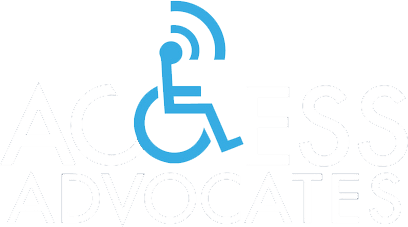In 2010, amendments were put in place for the Americans with Disabilities Act (ADA) that set up requirements for ATMs. It was in 2007 that Cardtronics, the ATM company that had been sued by the National Federation of the Blind, was ordered by a federal judge to make their machines accessible to those with visual-impairments. So, a few years later, the Department of Justice made requirements for ATMs clearer in the 2010 ADA Standards for Accessible Design.
Banks rushed to make their machines compliant with the ADA. Those falling behind were given a deadline to be compliant by March 15, 2012.
So, what are the requirements for ATMs to be ADA compliant?
ATMs must have:
- Clear floor or ground space of at least 30 inches by 48 inches in front of the ATM and be stable, firm and slip-resistant, and there must be an accessible route to get to machine.
- Machines must have operable parts for people with disabilities, differentiated by sound or touch, that can be reached by a person with a disability.
- The same degree of privacy as for other ATM users. Both persons with visual-impairments and those using wheelchairs must have access to a headphone jack for sound output instructions. People with visual-impairments need audio prompts and those in wheelchairs might not be able to block the screen.
- Machines must be speech-enabled.
- There must be a readily available and usable headphone jack.
- Users must be able to have the machine repeat messages or interrupt messages and also be able to control the volume of audio instructions.
- Audio receipts with adequate information conveyed.
- Input controls must be discernible by touch and raised, and keypads must be arranged like a telephone keypad with middle button discernible by touch. Keys’ characters must contrast with their backgrounds.
- Display screen must be visible from 40 inches above ground in front of the machine.
- There must be braille instructions for starting the speech mode on machine.
- If there is more than one ATM, at least one of them must be accessible to people with disabilities.
It is interesting, as banks have been required to make their ATMs accessible to people with disabilities, they have made them better for everyone. Having to upgrade their machines for people with disabilities, they figured they might as well make other improvements like having them equipped to scan checks and take multiple deposits at once. Just shows us the benefit we all receive when consideration is given to people with disabilities. People with disabilities are customers and it is good for banks and other establishments with ATMs to have their cash machines accessible to everyone.
You can contact us if you have been unable to access or use an ATM.
Photo credit: redspotted/Flickr

